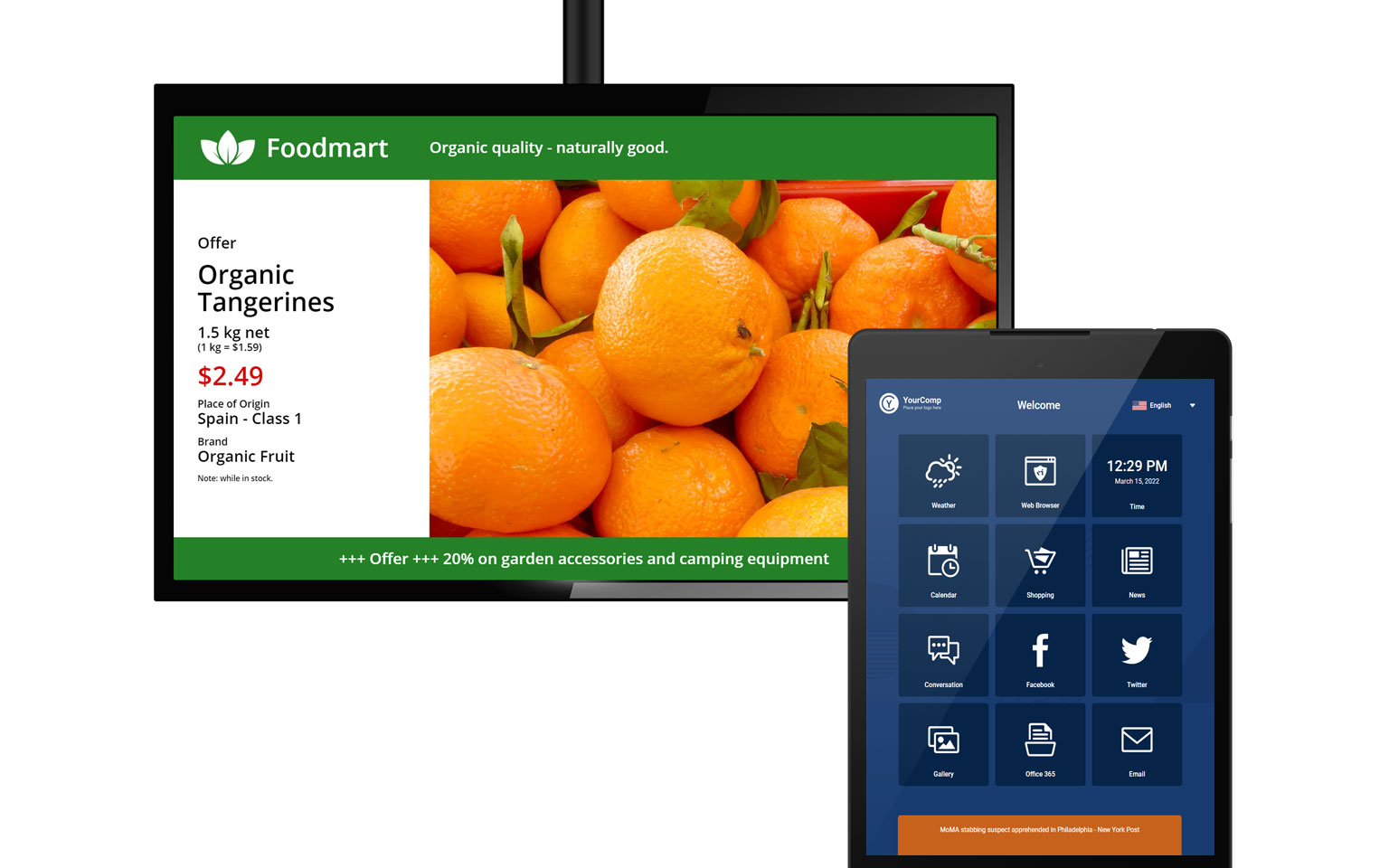In the bustling modern world, where attention spans are fleeting, capturing the imagination of passersby is no easy feat. Enter the captivating realm of digital signage – a powerful and dynamic medium that has revolutionized communication in public spaces. As interactive displays become increasingly prevalent, the impact on customer engagement and brand interactions is nothing short of remarkable. In this blog post, we will dive into the world of interactive digital signage and explore its significance in shaping the future of public spaces.
Digital signage, in its simplest form, refers to the use of digital displays to convey information, advertisements, and messages to an audience. Over the years, this once static form of communication has evolved into a dynamic and interactive experience that transcends traditional advertising methods. From bustling shopping malls and airports to corporate offices and educational institutions, interactive displays have become a ubiquitous presence in our daily lives.
Digital signage’s journey from simple static screens to interactive displays has been nothing short of remarkable. It began with basic electronic billboards that replaced traditional printed posters, allowing for dynamic content updates. However, it quickly became evident that passively displaying information was not enough to capture the attention of today’s tech-savvy consumers.

1. Interactive Displays: The Gateway to Immersive Experiences
Traditional static signage has given way to interactive displays that beckon with alluring possibilities. Equipped with cutting-edge touchscreen software, these displays invite users to engage, explore, and interact with content in a way that sparks curiosity and captivates the senses.
The turning point for digital signage came with the realization that engagement was the key to success. Enter interactive displays – a game-changer that empowers viewers to actively participate in the content presented to them. The ability to touch, swipe, and interact with the display content opened up a world of possibilities for businesses and organizations to create captivating and memorable experiences.
2. Digital Signage Software: Empowering Content Creation
Behind every mesmerizing display lies a canvas brought to life by creative minds. Digital signage software empowers businesses to design captivating content that showcases their brand, products, and services in a visually compelling manner, leaving a lasting impression on viewers.

3. Dynamic Versatility: Beyond Traditional Advertising
The versatility of interactive digital signage transcends traditional advertising. It serves as an informative guide, a virtual concierge, and an immersive storytelling platform. From interactive maps in shopping malls to virtual menus in restaurants, the possibilities are endless.
Interactive displays have redefined user experience, turning passive viewers into active participants. Whether it’s a touch screen kiosk at a retail store, a wayfinding display at a museum, or a digital menu board at a restaurant, interactivity adds a layer of engagement that leaves a lasting impression on users.
4. Enhancing Customer Engagement: A Memorable Experience
With interactive displays, customers become active participants rather than passive observers. This heightened engagement fosters a memorable and personalized experience that resonates with viewers long after they leave the vicinity.
In today’s information-saturated world, visual storytelling has become a powerful tool for communication. Interactive displays take this concept to a whole new level by allowing businesses to convey their message through captivating visuals, compelling narratives, and interactive elements that evoke emotions and connect with the audience on a deeper level.
Gamification, the integration of game elements into non-game contexts, has been successfully applied in interactive displays to increase engagement and participation. From interactive quizzes and challenges to virtual reality experiences, gamification adds an element of fun and excitement to the user experience.
5. Empowering Retail Spaces: Elevating the Shopping Journey
In the competitive retail landscape, interactive digital signage has emerged as a game-changer. It enables retailers to showcase product features, offer personalized recommendations, and even facilitate transactions, enriching the shopping journey and driving sales.
The retail industry has been quick to embrace the potential of interactive displays. From interactive product catalogs and virtual try-ons to self-service kiosks and digital signage, retailers are leveraging interactivity to transform the in-store shopping journey. These interactive experiences not only enhance customer engagement but also drive sales and brand loyalty.
6. Revolutionizing Hospitality: Personalized Guest Services
Hotels and resorts are embracing interactive digital signage to elevate guest experiences. From self-check-in kiosks to interactive guides for local attractions, guests benefit from personalized, on-demand services that cater to their individual needs.
One of the greatest advantages of interactive displays is the ability to customize content to suit different audiences and contexts. By leveraging data and analytics, businesses can tailor their messages to target specific demographics, locations, and even individual preferences, creating a more personalized and relevant experience for viewers.
7. Enhancing Learning Environments: Interactive Education
Educational institutions are embracing interactive digital signage to enrich the learning experience. From interactive campus maps to engaging learning materials, students benefit from a dynamic and interactive learning environment.
Interactive displays have also found their way into educational institutions, revolutionizing the way students learn and engage with content. From interactive whiteboards in classrooms to touch screen displays in libraries, these interactive tools foster a more dynamic and immersive learning environment.
8. Efficient Government Services: Simplifying Processes
Government agencies are leveraging interactive digital signage to streamline services. Citizens can access essential information, make appointments, and complete forms efficiently, reducing wait times and enhancing citizen satisfaction.
9. Healthcare Innovations: Empowering Patients
Hospitals and healthcare facilities are adopting interactive digital signage to empower patients with self-service options. From check-in kiosks to access to health resources, patients can take an active role in managing their healthcare journey.
10. Data-Driven Insights: Uncovering User Behavior
Interactive digital signage offers a treasure trove of data on user interactions. Businesses can analyze this data to gain valuable insights into user behavior, preferences, and pain points, enabling them to optimize content and offerings.
Conclusion
As digital signage continues to rise, interactive displays are at the forefront of reshaping public spaces. From immersive experiences and dynamic content creation to personalized engagement and efficient services, the impact is profound. Businesses across industries, from retail and hospitality to education and healthcare, are leveraging interactive digital signage to engage, inform, and delight their audiences. So, are you ready to embrace the power of interactive displays and unlock the full potential of your public space? Step into the world of interactive digital signage and elevate the way you connect with your audience!
Open a free 30-day trial account today!
It only takes a couple of minutes to log in for the first time and no credit card is required for the evaluation.

